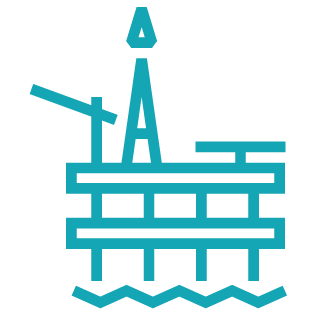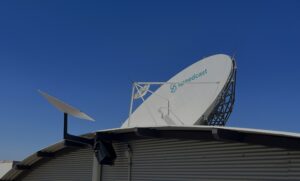The oil, gas and petrochemical sectors face a set of converging challenges today. Lower oil and gas prices have become the new normal, and producers are feeling the heat. Volatile prices increase the pressure to reduce costs and increase. Also on the tech investment list are environmental, safety and security concerns, and dealing with a shortfall of skilled personnel willing to spend long periods away from home.
What’s the solution? It used to be called the “digital oilfield.” Now we call it the Internet of Things, connecting all the sensors and devices involved in exploring, producing and transporting energy, and using analytics and machine learning to turn data into actionable knowledge. A wave of investment has gone into data technology over the past decade: the upstream divisions of oil supermajors are each spending $1-3 billion per year on acquiring data. But there’s an unintended consequence: companies are drowning in the data they produce. Three control room operators on one offshore rig receive data from as many as 30,000 sensors and have the ability to control some 200 operating variables. Who could possible handle that?
In today’s market, data has one job to do: to improve ROI from energy exploration, production and transport. Where is that happening today? Based on our experience with customers, we see five key areas:
1. Optimizing well construction and operation. Well construction makes up 40-70% of all capital spending in the oil and gas sector. IoT and analytics are already making a measurable difference in subsurface planning, well prospect maturation and process automation.
2. Making major gains in productivity. The typical offshore platform runs at about 77% of its maximum potential – which translates into a shortfall of about 10 million barrels per day. Using IoT and analytics, data scientists are finding the unrecognized bottlenecks that hold back production and building automation systems that help onsite operators manage better.
3. Unleashing the talents of employees to power the business. IoT systems help energy companies spread the talents of their best people around the globe. One UK-based oilfield services company created a network that connected systems on all the client’s offshore rigs to a single global service center for management and analysis. That reduced costs by 30%.
4. Improving health, safety and environmental performance. Medical IoT systems can improve healthcare on the worksite and avoid costly evacuations. Analytics can identify high-risk activities and risky behaviors, and make it possible to forecast health and safety performance and redesign processes to reduce risk. IoT monitoring and analysis can also reveal leakage and theft, and optimize production while improving compliance with environmental regulations.
5. Gaining insight into unrealized opportunities. Predictive analysis based on massive amounts of data lets companies predict when maintenance will be needed – before a failure at the wellhead starts costing $100,000-300,000 per day in lost production.
To realize these opportunities, the oil and gas sector requires the kind of high-capacity connectivity across its far-flung operations you would only expect to find in the business district of a major city. Data is the new oil, it has been said, and it must flow on the same scale as the oil and gas operations that generate it. That’s where Speedcast can help.
Want to know more? Download our white paper, Five Roads to Greater ROI, today.



























